La Chablisienne since 1923
The beginning of our story dates back to 1923 when a number of winegrowers, faced with the economic crisis of the times, grouped together under the leadership of the Abbé Balitrand to found a cooperative winery in Burgundy, in the heart of the Chablis vineyards, to sell their wines. Up to the middle of the 1950s, members brought their wines to La Chablisienne which then took charge of the blending and sold most of the production wholesale to the wine trade.
Eventually, with a desire to forge on and create its own style, La Chablisienne decided to take in the harvest directly in the form of musts, ensuring that the winery had full control over vinification. This policy has remained a defining feature of La Chablisienne to this day. The winegrowers and technical staff, working together in ongoing exchange, refine the links between the quality of the musts and the climats, or vineyard plots, establishing guidelines for future vineyards as well as for maturing and ageing the wines.
La Chablisienne, still imbued with that pioneering drive, continues to meet the wide-ranging challenges in the vineyards, in vinification, in human resources and in sales… It is the meticulous work of one and all in combination that gives birth to wines that with the passage of time achieve their magnificence.
Our winery groups nearly 300 winegrowers to produce the great white wines of Chablis. These wines reflect the utmost care our winegrowers devote to the cultivation of their vineyards and the commitment our winemakers bring to revealing the heart and soul of the wines. It is this subtle harmony between the grower in the vineyards, the technical advisor and the winemaker which bestows on our wines their much sought-after distinction.
The origins of Chablis village and Chablis wine
The foundation of the Chablis village and its first wines dates back to the Romans. The name "Chablis" might derive from Celtic words meaning "the slope of the ford".
In the year 510, the Christian King Sigismond founded a small monastery dedicated to Saint-Loup, around which the village slowly expanded during the Middle Ages. In the ninth century, the Benedictine monks of the abbey of Saint-Martin de Tours, fleeing the Vikings invaders who sailed up the river Loire, settled in Chablis. In the early 12th century, the foundation, a few leagues from Chablis, of the cistercian abbey of Pontigny, was an other major event for the extension and the fame of the vineyard. Then, vineyards were offered to the religious orders, among other donations. They became important owners.
In a few decades, the reputation of the Chablis wine extended beyond the frontiers of Yonne and Auxerre. The planting of the Chardonnay grape variety in the terroir of Chablis resulted from the monks' meticulous work. Through their impetus, the vine-trade got organized: the wine was exported and mainly to Great Britain. In the same period, it was served to the kings of France.
From the middle-Ages to the Renaissance, the culinary arts became more and more refined and Chablis wines accompanied the most delicate meals. The 17th and 18th centuries were also prosperous times because of the improvement of the means of transport and the development of European trade. The sudden stop to the expansion dates from the late 19th century when phylloxera and mildew destroyed the vineyard.
It was necessary to start again from square one, to exploit the soil, to replant the wine with Chardonnay plants grafted on resistant rootstocks. Then the most prosperous years of the Chablis wine began. It gained an international reputation and took part in the most beautiful stories of the Burgundian wines. In Great Britain, in the United States, in Northern Europe and in Russia, Chablis was synonymous with dry white wine. To meet the great demand of the export trade, the vineyard enlarged and benefited by news viticultural techniques and by protection against the spring frost.
The vineyards
Chablis vineyards extend over twenty villages and 11 614.2 acres. This terroir is the result of a delimitation of the INAO (National Institute for the French Appellations) which defines four different appellations:
- Petit Chablis over 1 71.89 acres harvested mainly on the plateaux.
- Chablis over 7724.66 acres on the slopes.
- Chablis Premier Cru over 1882.98 acres on the slopes facing south-west or south-east.
- Chablis Grand Cru over 249.581 acres, harvested in the Chablis village, right blank of the river "Serein". Most of the slopes face south-west.
The sub-soil gives to Chablis wines a unique character. Its origin goes back to the formation of Paris basin. During the Mesozoic era, the sea abbs and flows accumulated different types of sediment in a small hollow which extended and became a large sedimentary basin. The superposition of the different geological strata formed an alternated structure "in pile of plates". The different geological phases are :
- Kimmeridgian (from – 146 to – 141 millions years) with alternate marls and marly limestone. It corresponds to the appellations of Chablis, Chablis Premier Cru and Chablis Grand Cru.
- Portlandian (from – 141 to -135 millions years) is the terroir of Petit Chablis appellation.
Chablis wines reflect the terroirs they come from. It gives them their extraordinary mineral touch, as well as a remarkable aromatic fineness and a perfect limpidity.
Chablis has a continental climate. The four seasons are very different: hard winters, springs with frost, hot summers and autumns bringing ideal conditions to mature the grapes perfectly.
Location
Chablis is located about twenty kilometres from Auxerre in northern Burgundy. This village of about 2 500 inhabitants is famous for its white wine, unique all over the world.
 The genuine Chablis wine is produced in Chablis and surroundings, Chablis vineyards including twenty villages and hamlets. Like the greatest white wines of Burgundy, Chablis wine is produced from only one grape variety: the Chardonnay. The wines are planted on slopes, on each bank of the river "Serein". The sub-soil, the famous Kimmeridgian, consists of marls as well as marly limestone.
The genuine Chablis wine is produced in Chablis and surroundings, Chablis vineyards including twenty villages and hamlets. Like the greatest white wines of Burgundy, Chablis wine is produced from only one grape variety: the Chardonnay. The wines are planted on slopes, on each bank of the river "Serein". The sub-soil, the famous Kimmeridgian, consists of marls as well as marly limestone.
In order to marvel at these wines cultivated like gardens, you just have to climb up one of the hills surrounding the village. From the small wood of "Les Clos" area, you'll enjoy the panoramic view on the vineyards, with, on the foreground, the seven plots of the Grands Crus, the finest jewels of Chablis. Many footpaths lead to the wines and enable you to immerse yourself in the vineyard landscape before the wine tasting.
Our terroir
«Appellations | Our tasting notes»
The terroirs that produce the wines of La Chablisienne represent the whole Chablis appellation area.
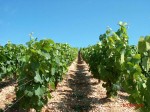 The soils, formed in the main in Kimmeridgian times, are made up of alternating marl and marly limestone with deposits of tiny oysters. They stamp the wines of La Chablisienne with outstanding personality, hallmarked by an unusual mineral edge. Each terroir , clearly identified and circumscribed, produces unique wines, with different characters and potential for ageing. The Petit Chablis show perfectly from one to three years, the Chablis require from two to five years depending on the particular wine. Chablis Premiers Crus and Chablis Grands Crus, true wines for ageing, need to be kept for five to ten years.
The soils, formed in the main in Kimmeridgian times, are made up of alternating marl and marly limestone with deposits of tiny oysters. They stamp the wines of La Chablisienne with outstanding personality, hallmarked by an unusual mineral edge. Each terroir , clearly identified and circumscribed, produces unique wines, with different characters and potential for ageing. The Petit Chablis show perfectly from one to three years, the Chablis require from two to five years depending on the particular wine. Chablis Premiers Crus and Chablis Grands Crus, true wines for ageing, need to be kept for five to ten years.
Of vital importance to the expression of a vineyard plot’s singular character is its exposure, most of the climats belonging to La Chablisienne benefiting from a south-easterly, southern or south-westerly aspect.
Appellations
«Our vineyards practices and winemaking methods | Our terroir»
Petit Chablis
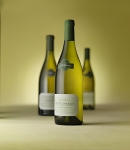 The “Petit Chablis” appellation forms the base of the Chablis appellation hierarchy. Situated on the plateaux in clay and limestone soil deriving from Portlandian geological times, the Petit Chablis constitute a panoply of wines whose expressions range from the fresh and lively with fruity aromas best enjoyed young, to dry, mineral wines enhanced by two or three years ageing. Whatever their profile, “Petit Chablis” provide the winelover with a key to the world of Chablis, opening the way to the treasure house of the “Grands”.
The “Petit Chablis” appellation forms the base of the Chablis appellation hierarchy. Situated on the plateaux in clay and limestone soil deriving from Portlandian geological times, the Petit Chablis constitute a panoply of wines whose expressions range from the fresh and lively with fruity aromas best enjoyed young, to dry, mineral wines enhanced by two or three years ageing. Whatever their profile, “Petit Chablis” provide the winelover with a key to the world of Chablis, opening the way to the treasure house of the “Grands”.
Chablis
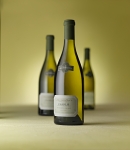 The “Chablis” appellation is the most extensive of the whole Chablis area. Growing in the renowned Kimmeridgian soil on slopes along both sides of the River Serein, the “Chablis” vineyards give wines that are the indisputable representatives of the real Chablis style. The terroir here brings freshness, a mineral edge, finesse and complexity. Depending on the vinification, the wine can be drunk young, one to three years old, when it has a refreshing quality; or between three and eight years for wines coming from old vines, when they will possess much more complexity, with a mineral touch and richness of aromas.
The “Chablis” appellation is the most extensive of the whole Chablis area. Growing in the renowned Kimmeridgian soil on slopes along both sides of the River Serein, the “Chablis” vineyards give wines that are the indisputable representatives of the real Chablis style. The terroir here brings freshness, a mineral edge, finesse and complexity. Depending on the vinification, the wine can be drunk young, one to three years old, when it has a refreshing quality; or between three and eight years for wines coming from old vines, when they will possess much more complexity, with a mineral touch and richness of aromas.
The Premiers Crus
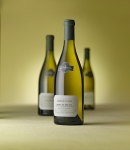 An encounter with the thirteen different terroirs of the “Chablis Premier Crus”, situated on both banks of the Serein, provides an understanding of the great Kimmeridgian terroirs in Chablis. The vineyards of the Premiers Crus flourish on superbly exposed south-east and south-west facing slopes, bringing to each wine its own unique personality. Thus, certain Premiers Crus such as the Montée de Tonnerre or Côte de Léchet are fine and mineral whereas others, for example the Beauroy, are softer and more fruity, or floral and full-fleshed like the Fourchaume. Chablis Premier Crus reach their full splendour in six to eight years.
An encounter with the thirteen different terroirs of the “Chablis Premier Crus”, situated on both banks of the Serein, provides an understanding of the great Kimmeridgian terroirs in Chablis. The vineyards of the Premiers Crus flourish on superbly exposed south-east and south-west facing slopes, bringing to each wine its own unique personality. Thus, certain Premiers Crus such as the Montée de Tonnerre or Côte de Léchet are fine and mineral whereas others, for example the Beauroy, are softer and more fruity, or floral and full-fleshed like the Fourchaume. Chablis Premier Crus reach their full splendour in six to eight years.
The Grands Crus
 Renowned worldwide, the “Chablis Grands Crus” are known by winelovers everywhere as the kings of the appellation. Coming exclusively from the right bank of the Serein at Chablis itself, the vineyards make up a complete ensemble of 100 hectares (240 acres) most of which have a south-west aspect. Chablis Grands Crus are well formed and complete with an affirmed character that is enhanced with time. Before really opening out they need five to eight years of ageing and can keep remarkably well. La Chablisienne harvests and vinifies six of the seven Grands Crus, each of which has its own different personality: Bougros: lively and mineral, Les Preuses: with breed and length, Vaudésir: fleshy and big, Les Clos: dry and mineral, Blanchot: supple and aromatic, Grenouilles: elegant and fruity.
Renowned worldwide, the “Chablis Grands Crus” are known by winelovers everywhere as the kings of the appellation. Coming exclusively from the right bank of the Serein at Chablis itself, the vineyards make up a complete ensemble of 100 hectares (240 acres) most of which have a south-west aspect. Chablis Grands Crus are well formed and complete with an affirmed character that is enhanced with time. Before really opening out they need five to eight years of ageing and can keep remarkably well. La Chablisienne harvests and vinifies six of the seven Grands Crus, each of which has its own different personality: Bougros: lively and mineral, Les Preuses: with breed and length, Vaudésir: fleshy and big, Les Clos: dry and mineral, Blanchot: supple and aromatic, Grenouilles: elegant and fruity.
Château Grenouilles, a wine of legend
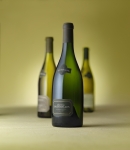 The Château Grenouilles estate is an exceptional property unique in Chablis. Situated in the heart of the Grands Crus vineyards at the foot of the Grenouilles hillside, its 7.2 hectares (some 18 acres) form one superbly exposed single plot facing south-west towards the village and produce the rarest of Chablis Grands Crus: Les Grenouilles. This Château Grenouilles is made from selected sections carrying the oldest vines in the vineyard and the wine allies a nose with great definition to an aromatic purity in the mouth, a harmony of power and finesse and a very long finish. Blessed with enormous potential for keeping, it is a statement of what a great Chablis vin de terroir is. The Château’s second wine, “Le Fief de Grenouilles”, illustrates to perfection the style of Grenouilles’s terroir. The harvest from vines more than thirty five years old gives a wine that is a perfect expression of generosity, harmony between structure and elegance and the mineral edge of a Chablis Grand Cru.
The Château Grenouilles estate is an exceptional property unique in Chablis. Situated in the heart of the Grands Crus vineyards at the foot of the Grenouilles hillside, its 7.2 hectares (some 18 acres) form one superbly exposed single plot facing south-west towards the village and produce the rarest of Chablis Grands Crus: Les Grenouilles. This Château Grenouilles is made from selected sections carrying the oldest vines in the vineyard and the wine allies a nose with great definition to an aromatic purity in the mouth, a harmony of power and finesse and a very long finish. Blessed with enormous potential for keeping, it is a statement of what a great Chablis vin de terroir is. The Château’s second wine, “Le Fief de Grenouilles”, illustrates to perfection the style of Grenouilles’s terroir. The harvest from vines more than thirty five years old gives a wine that is a perfect expression of generosity, harmony between structure and elegance and the mineral edge of a Chablis Grand Cru.
Our vineyard practices and winemaking methods
«A single variety, the Chardonnay | Appellations»
La Chablisienne’s commitment is to ensuring that its members run their vineyards in accordance with the principles of sustainable viticulture.
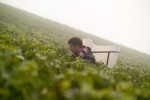 Our priorities are working the soil, the quality of the vines and intervention on the plant throughout the growing season. Recourse to treatment products must be balanced – the French say ‘reasoned”- to ensure respect for the environment, for the vine itself and for people. All this combined activity converges in the choice of the optimal harvesting date which is determined individually, plot by plot, according to analysis of the crop and the taste of the grapes.
Our priorities are working the soil, the quality of the vines and intervention on the plant throughout the growing season. Recourse to treatment products must be balanced – the French say ‘reasoned”- to ensure respect for the environment, for the vine itself and for people. All this combined activity converges in the choice of the optimal harvesting date which is determined individually, plot by plot, according to analysis of the crop and the taste of the grapes.
Vinification methods are inspired by the same commitment to getting the utmost from the juice, obtaining the greatest expression from the wealth of potential in Chablis’s supreme terroirs.
Our desire is materialised by what are in fact relatively simple winemaking practices:
· musts tasted and analysed systematically prior to rigorous selection,
· avoidance of any hard and fast approach, so that technical decisions can be reasoned and adapted to each wine,
· tasting as the primary tool,
· choices in vinification made in the light of each terroir,
· winemaking and maturing carried out in stainless steel tanks and in barrels (great care taken in choosing both the oak and the barrels),
· extended barrel-ageing on the lees, depending on each classed Cru,
· totality of each wine bottled at the same time.
A single variety, le Chardonnay
«About thirty "Crus", with a largest palette of mineral aromas | Our vineyard practices and winemaking methods»
The great renown of Chablis can be ascribed to its unique grape variety: Chardonnay.
 It is here in Burgundy, its original homeland, that the grape’s character emerged to become a synonym over the centuries for wine in all its great splendour. On the slopes of Chablis along the Serein valley, the Chardonnay has found over the generations an ideal fit with its native terroir. It is a perfect match deriving largely from the inspired insight of Cistercian monks from Cîteaux, who founded Pontigny Abbey in the 12th century, and which continues to underlie the association of Chardonnay with the terroirs of Chablis.
It is here in Burgundy, its original homeland, that the grape’s character emerged to become a synonym over the centuries for wine in all its great splendour. On the slopes of Chablis along the Serein valley, the Chardonnay has found over the generations an ideal fit with its native terroir. It is a perfect match deriving largely from the inspired insight of Cistercian monks from Cîteaux, who founded Pontigny Abbey in the 12th century, and which continues to underlie the association of Chardonnay with the terroirs of Chablis.
The work these monks accomplished is crucial to an understanding of today’s wines. The long process, year after year, of identifying the finest terroirs, selecting the best plants to set apart for propagation, perfecting suitable viticulture, experimenting with winemaking methods vintage after vintage – such is the inestimable contribution made by the monastic wine culture of Burgundy. The same outlook and commitment lives on today at La Chablisienne.
Andreas Larsson - Third Edition
My Top Picks - The second highest rank. The wines are showing typicality, character, structure, complexity, concentration, length and cellaring potential of all the wines of its appellation, class and type. And apart from its category it's always an exceptional wine that belongs on the list of the absolutely best wines produced today.
I Liked - The third highest rank. A wine with character, structure, and a certain amount of length or complexity. The wines I Liked may be easily enjoyed today or aged for some time.
* - The star marks a wine that is distinct and stood out in its category for possession of unique qualities and a marked character.

My Top Picks
La Chablisienne - Chablis Les Vénérables
Some complexity on the nose, lightly roasted, hazelnuts and ripe fruit, good structure and length on the palate, well-made and balanced.
La Chablisienne - Chablis Premier Cru Montée de Tonnerre
Floral and intense nose, yellow fruit, ripe lemon and minerals, good structure, keeps lingering for a while, fresh and fruity aftertaste, well-balanced, slightly more opulent.
I Liked
*La Chablisienne - Chablis Premier Cru Fourchaume
Grape fruit, minerals and some nutty notes, fruity and fresh with a ripe acidity, good length and structure.
La Chablisienne contacts
Le Caveau - Our Cellar:

Open every day except December 25th and January 1st
From January to March, from 9am to 12.30pm and from 2pm to 6pm.
From March to June, from 9am to 12.30pm and from 2pm to 7pm.
In July and August, from 9am to 7pm.
From September to December, from 9am to 12.30pm and from 2pm to 7pm.
To contact us :
Our Cellar
email : caveau@chablisienne.fr
Tél. : + 33 3 86 42 89 98
Damien Leclerc - Managing Director
email : chab@chablisienne.fr
Tél. : +33 3 86 42 89 89
Yolande Cressier - Sales Manager for France HORECA
email : france@chablisienne.fr
Tél. : +33 3 86 42 89 92
Marc Vachet - Export Sales Manager
email : export@blasonsdebourgogne.com
Tél. : +33 3 86 42 88 78
Address :
8, Boulevard Pasteur - BP.14 - 89 800 Chablis / France
Tél : +33 3 86 42 89 89
Fax : +33 3 86 42 89 90
Map:






